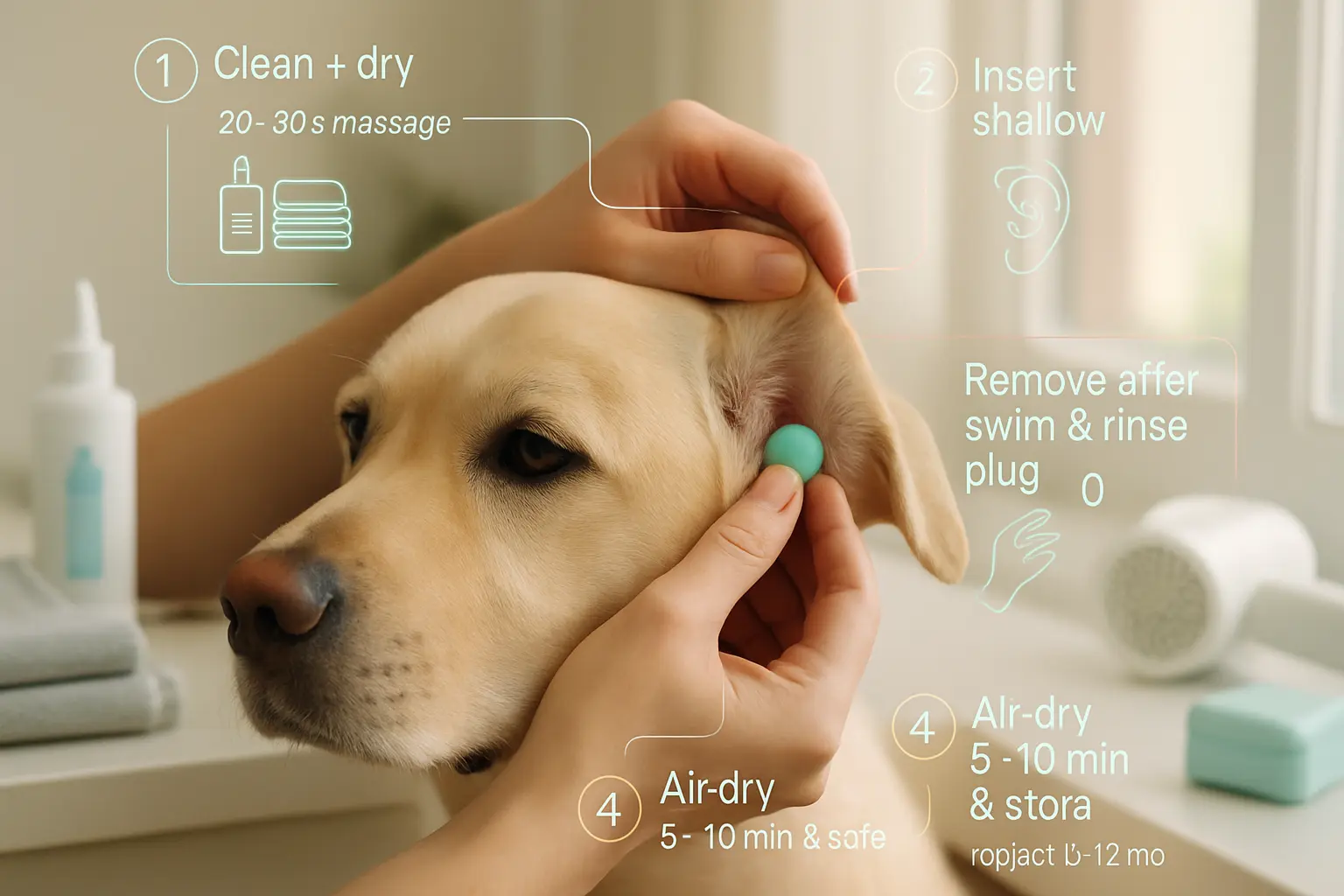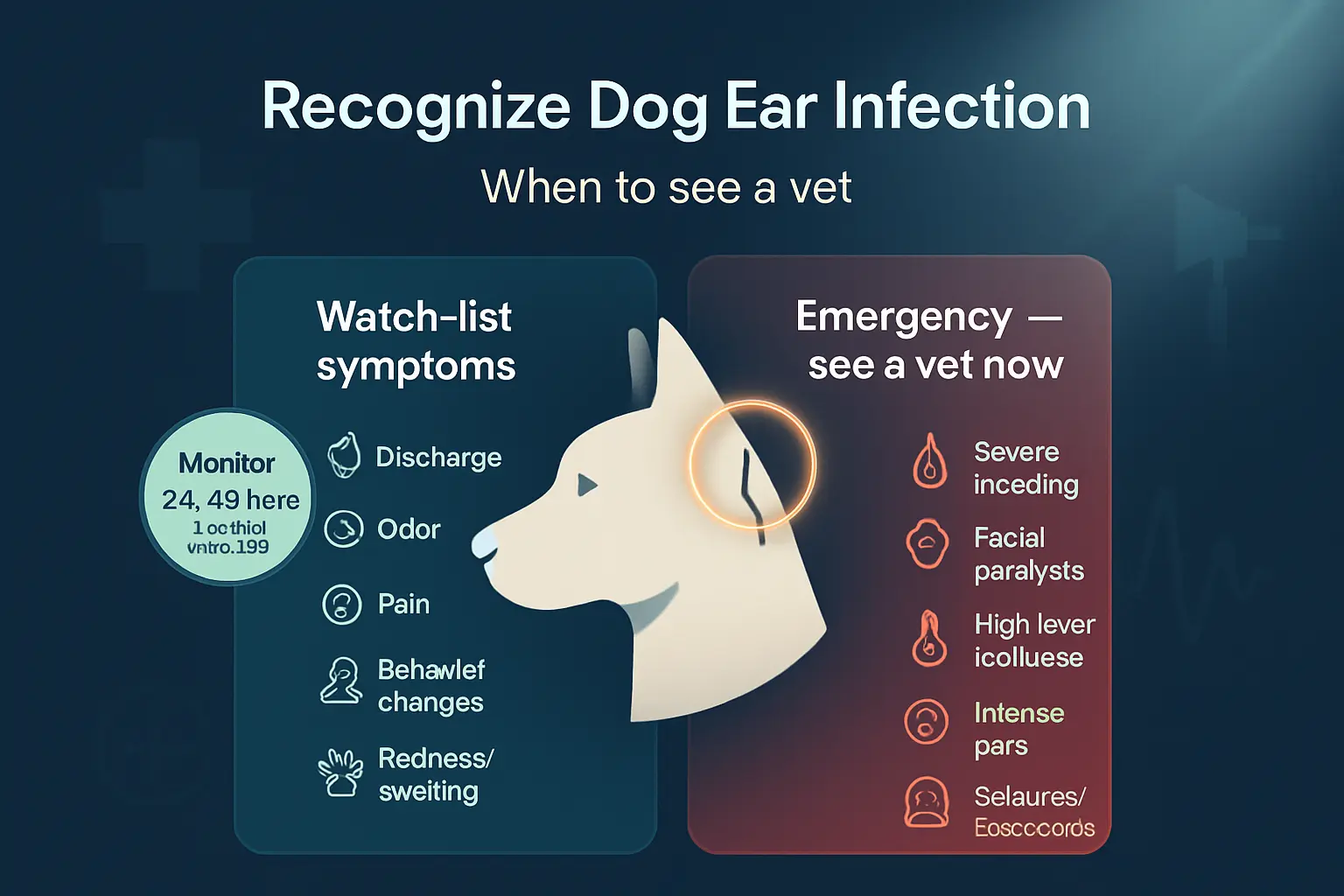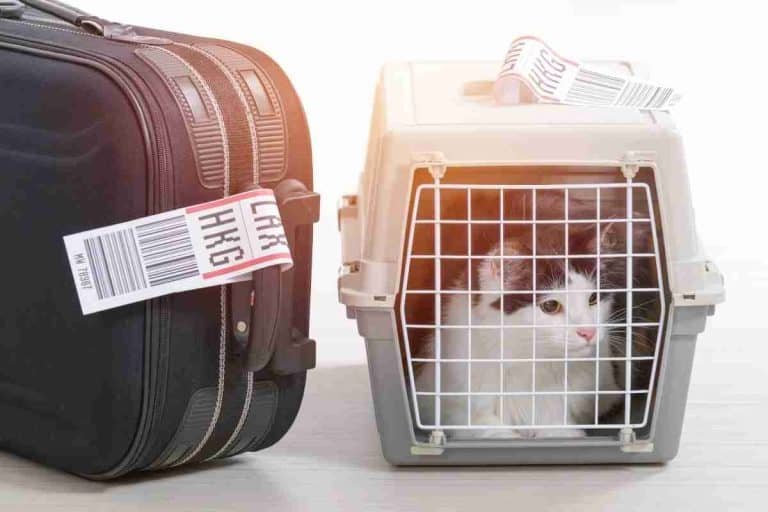Dog Ear Plugs for Swimming: Are They Safe and Effective?
Affiliate Disclaimer: As an affiliate, we may earn a small commission when you make a purchase from any of the links on this page at no additional cost to you!
Last Updated on October 22, 2025
Dog ear plugs for swimming can help some dogs, but safety and results vary. When fitted properly and removed promptly, plugs may reduce water entry. Used poorly, they trap moisture, fuel otitis externa, irritate skin, or become swallowing hazards. Ear anatomy, water source, and product design determine whether they’re safe and effective.
Owners comparing silicone earplugs, swim snoods, caps, and custom veterinary devices get concise pros and cons. They also see how breed risk, ear anatomy, and pool, lake, or ocean conditions shape decisions. Step‑by‑step fitting, drying routines, red‑flag symptoms, and a practical buying checklist support safer swimming.
Why water can cause ear problems in dogs
Water introduces two main problems to a dog’s ear: moisture that the ear cannot shed quickly, and environmental microbes that multiply in that moisture. When water stays in the ear canal it reduces oxygen and raises temperature locally. Those conditions favor bacteria and yeast already present on the skin to overgrow, producing otitis externa. Water also changes the texture of earwax, making it sticky and trapping debris.
Repeated wetting worsens irritation. Small cuts or scratches in the canal from debris or excessive scratching provide entry points for infection. Dogs that swim frequently may develop chronic inflammation, which narrows the canal and further traps moisture. Pool chemicals can irritate the skin, increasing vulnerability, while organic water bodies can introduce uncommon pathogens.
Owners who plan regular swims should rinse and dry ears promptly and watch for redness, odor, or head shaking. For guidance on safe swimming options and pool choices for dogs, see 10 refreshing puncture-proof dog pools. If signs persist, consult a veterinarian for diagnosis and targeted treatment.
How a dog’s ear anatomy traps moisture and promotes infection
Dog ear anatomy differs sharply from human ears. Most dogs have a long, vertical canal that then curves horizontally toward the eardrum. That L-shaped canal funnels water inward and holds it against the skin. The external pinna, or ear flap, further shades the canal, creating a warm, dark environment ideal for microbes.
Ceruminous glands produce earwax that normally protects the canal. When water alters wax consistency, hair and debris stick to it and block natural clearance. Breeds with abundant hair inside the canal add another barrier to drying. The combination of a narrow lumen, hair, and enclosed warmth lets bacteria and yeast multiply rapidly.
Frequent head shaking pushes contaminated material deeper and can abrade the lining. Regular inspection helps catch early swelling and discharge. For more on how ear physiology affects pets in travel and pressure situations, owners can read about does flying hurt dogs’ ears, which covers related ear sensitivity issues.
Which breeds and ear types are most at risk
Certain breeds develop ear problems more often because of ear shape or hair density. Pendulous-eared breeds such as Cocker Spaniels, Basset Hounds, and Labrador Retrievers trap humid air and water in their canals. Breeds with hairy canals, like Poodles and many designer breeds, also retain moisture. Narrow, stenotic canals—seen in some Bulldogs and Bulldogs-cross—reduce airflow and slow drying.
Those factors combine with breed-specific skin folds or allergies to raise infection risk. Dogs with chronic allergic dermatitis often get recurrent otitis because inflammation compromises the canal’s defenses. Regular grooming, targeted hair plucking inside the canal when recommended, and routine ear checks reduce risk.
Small companion breeds can struggle with swimming due to conformation and ear shape. Owners curious about breed swimming tendencies can learn more from can Shih Tzus swim, which discusses how conformation affects water activity.
Does the type of water (pool, lake, ocean) change the risk
Yes. Different water sources carry distinct risks for a dog’s ear health. Chlorinated pools reduce common bacteria counts, but chlorine can irritate the canal’s skin and strip protective oils. That irritation raises the chance of secondary infection if the skin barrier breaks.
Freshwater lakes and rivers often contain higher loads of bacteria, algae, and protozoa. Stagnant or slow-moving water poses the greatest microbial risk. Ponds can harbor Pseudomonas and other robust organisms that cause difficult infections.
Saltwater contains organisms and debris that can irritate and leave salt residues, which delay drying. Pollution, runoff, and blue-green algae create variable hazards across locations. Cold water reduces microbial growth but slows drying as well.
After any swim, owners should rinse ears with clean water or a vet-approved ear rinse and towel-dry gently. Avoid cotton swabs. For practical seaside safety tips, see tips for taking pets to the beach. If a dog shows discharge, odor, or repeated head shaking, seek veterinary care promptly.
What ear-protection options exist for swimming dogs
Dog owners seeking ear protection for swimmers find three broad approaches: internal seals (earplugs), external covers (snoods, caps, covers), and bespoke veterinary solutions. Each approach aims to reduce water entry into the ear canal, but they differ in seal quality, comfort, and risk of trapping moisture.
Internal seals normally attempt a watertight fit at the canal opening. External covers shield the pinnae and hair around the ear without entering the canal. Veterinary-made devices combine impressions and medical-grade materials for a custom fit.
Choice depends on the dog’s ear anatomy, swimming intensity, and history of ear disease. Dogs with narrow or pendulous ears pose different challenges than those with erect, open canals. Frequent swimmers need solutions that balance waterproofing with ventilation and easy drying.
Owners should weigh practicality: ease of use, repeatability of fit, and how likely a dog will dislodge a device while playing. For guidance on selecting swimming gear and safe water setups for dogs, see 10 refreshing puncture-proof dog pools.
Moldable and tree-style silicone earplugs — how they work
Moldable silicone earplugs come as putty or bulb shapes that owners press into the outer ear. Tree-style plugs use soft silicone fins that expand in the ear opening to form a seal. Both types attempt to block water at the canal entrance rather than enter deeply.
Advantages include quick application and generally good water resistance when placed correctly. They suit occasional swimmers and dogs with cooperative temperament. Moldable putty adapts to irregular ear shapes; tree plugs provide repeatable insertion and removal.
Risks focus on trapped moisture and improper fit. A tight seal prevents water but also prevents airflow, increasing the risk of otitis externa if used long-term. Poorly inserted plugs can push debris deeper or irritate the ear canal. Clean, dry ears before use and inspect the ear regularly after swimming.
Owners must practice fitting on land, watch for rubbing or head shaking, and remove plugs promptly after activity. For notes on ear sensitivity and pressure effects in dogs, consult Does flying hurt dogs’ ears?.
Swim snoods, caps and external covers — pros and cons
Swim snoods and caps cover the whole ear area and adjacent fur. They do not enter the ear canal. Instead, they reduce splashing and keep ear hair drier. External covers work well for light swimming and for short exposure to splashes.
Pros
- Easy to put on and remove.
- Lower risk of canal irritation or pushing debris.
- Comfortable for dogs that dislike objects inside their ears.
Cons
- Not fully watertight; water can still reach the canal during dives.
- Can slip off during vigorous play.
- Require correct sizing to avoid pressure points or circulation issues.
For dogs that wear protective clothing, owners can combine external covers with proper drying after swims. See practical tips on dog outerwear and underbelly protection at Waterproof dog coats with underbelly protection.
Using human earplugs or custom veterinary devices
Human earplugs appear convenient, but they rarely match canine ear anatomy. A plug designed for human canals may not seal or may fall out. Foam, wax, or generic silicone plugs can cause irritation or become a choking hazard if dislodged during play.
Custom veterinary devices use ear impressions and medical-grade materials. A veterinarian or veterinary audiologist creates a mold of the outer ear and produces a tailored stopper. These devices offer the best seal and comfort for frequent swimmers or dogs prone to infections.
Custom options cost more but reduce the chance of water entry and skin irritation. They also allow for ventilation features and easier removal. Owners should avoid DIY deep insertions and consult a vet before using any internal device on a dog with a known ear condition.
Understanding a dog’s hearing range can guide decisions about materials and fit; for context on canine hearing, review How far can dogs hear?. Always have a veterinarian check the ears first and consider a trial fitting under supervision.
Safety concerns and potential downsides of ear plugs

Ear plugs for swimming aim to keep water out, but they change the ear’s natural environment. Trapping air, moisture, or debris can create a warm, humid space where bacteria and yeast thrive. Dogs with a history of otitis externa, chronic ear inflammation, or perforated eardrums face higher risk from occlusive devices. Owners should consider breed anatomy too; dogs with narrow canals or heavy hair in the ear canal often react poorly to foreign objects.
Application and removal errors can cause pain or injury. A poorly seated plug can push water and grime deeper into the canal during head shakes. Improper materials — low-quality foam or brittle plastics — can break and leave fragments behind. Because ear health connects to other travel concerns, owners who fear pressure-related ear pain may find related guidance useful: Does flying hurt dogs’ ears? explains how ear pressure and sensitivity differ among dogs.
Before using ear plugs, owners should consult a veterinarian. A vet can screen for existing ear disease, recommend appropriate designs, and demonstrate safe insertion and removal. When plugs are chosen, owners must inspect them before and after each swim, and remove them promptly to allow the canal to air and dry.
Risks of improper fit, insertion injury, and plug loss
An improper fit ranks among the most immediate hazards. A plug that sits too deep can abrade the ear canal lining or, in extreme cases, contact the eardrum. Forcible insertion while a dog struggles increases the chance of laceration or ruptured membranes. Owners should never push a plug past where comfortable resistance begins.
Loss of a plug is another practical risk. If a dog shakes its head or paws at its face, a loose plug can fall out into the coat or be swallowed. Swallowed silicone or small plastic pieces pose an intestinal blockage risk in small breeds and puppies. Supervision during and after swims reduces this danger. Training an acceptance routine helps, too: short acclimation sessions, treats, and gentle handling decrease fight-and-pull reactions. For broader handling and safety techniques when managing large or reluctant dogs, see guidance like 5 steps to safely lift a large dog into a car, which emphasizes calm control and minimizing stress during close contact.
If a plug fragments or a dog shows sudden head tilt, bleeding, or severe pain, seek veterinary care immediately.
How plugs can trap debris or moisture and worsen infections
Ear plugs alter the ear canal’s airflow and drying. When water mixes with trapped earwax, sand, or algae, the canal environment becomes ideal for microbes. Chlorinated pool water can irritate already-sensitive skin, and natural bodies of water may introduce bacteria and parasites. A plug that seals the canal prevents normal evaporation and keeps contaminants pressed against the skin.
Signs of a developing infection include foul odor, dark discharge, redness, head shaking, and increased scratching at the ear. If these signs appear after swimming with plugs, remove the plugs and contact a veterinarian. Treatment may require topical or systemic medication and thorough cleaning under veterinary supervision. Regular post-swim care reduces risk: dry the outer ear with a towel, use vet-recommended drying solutions when appropriate, and avoid inserting cotton swabs into the canal. For owners focused on safe water activities, resources about dog pools and safe swim gear can help plan cleaner swim sessions: 10 refreshing puncture-proof dog pools offers ideas for controlled, less contaminated water play.
When infections are frequent, ear plugs serve as a red flag, not a fix. Reassess swim practices and consult a vet for preventive strategies.
Behavioral tolerance and choking or swallowing hazards
Not all dogs tolerate ear plugs. Many dogs find the sensation unfamiliar and will paw, shake, or roll to remove them. Persistent attempts to dislodge plugs increase the chance of accidental ingestion or the plug embedding deeper in the canal. Puppies and anxious dogs present higher behavioral risk. Owners should never leave a plugged dog unsupervised until confident the animal accepts them without destructive attempts.
Acclimation helps: start with short sessions, reward calm behavior, and gradually extend wear time. If a dog refuses consistently, pursue alternatives rather than force compliance. Alternatives include conditioning to dry-ear routines, using a snug waterproof dog headwrap or hood that limits water entry, or avoiding submersion of the head altogether. Behavioral tools for travel-related anxiety translate well to acclimating dogs to swim gear; see tips like 9 natural ways to remedy your dog’s travel anxiety for training-based approaches.
If a plug disappears and ingestion is suspected, contact a veterinarian or emergency clinic immediately. Quick professional assessment prevents dangerous obstructions and ensures the best outcome.
Veterinary guidance and what the evidence says
Veterinarians approach dog ear plugs for swimming cautiously. Clinical guidance rests more on experience than robust trials. Otitis externa, or outer ear infection, remains the most common concern after water exposure. Clinicians prioritize preventing infections while avoiding devices that trap moisture or irritate skin.
Key, evidence-based points vets emphasize include proper fit, nonporous but breathable materials, and removal immediately after swimming. Owners must avoid deep insertion that risks the ear canal or eardrum. If a dog has a history of recurrent ear infections, veterinarians usually recommend a tailored plan before trying plugs.
Owners should consult a veterinarian when ear pain, discharge, head shaking, or odor appears. A professional exam rules out perforated eardrums, allergic dermatitis, and other conditions that change recommendations. For general ear-health context, vets sometimes reference resources about ear sensitivity, such as does flying hurt dogs ears.
CTA: Schedule a veterinary ear exam before using plugs on dogs with previous ear disease.
Common veterinarian recommendations for swimmers
Veterinarians offer practical steps to reduce ear problems during swims. They focus on prevention, not reliance on a single product. Common recommendations include:
- Dry ears thoroughly after swimming using a towel and gentle ear-drying solutions prescribed or recommended by the vet.
- Inspect ears before and after exposure for redness, wax build-up, or discharge.
- Avoid improvised plugs such as cotton balls pushed into the canal. They can retain water and introduce debris.
- Use moldable silicone caps or purpose-built dog ear covers that sit at the ear opening, not deep in the canal.
- Remove protection promptly after swimming and clean both ear and device according to manufacturer instructions.
Vets also advise gradual acclimation if a dog resists ear covers and recommend professional fitting for bespoke silicone plugs. For equipment ideas and safe swimming options, owners may review resources on dog pools like 10 refreshing puncture-proof dog pools.
When ear protection is recommended vs. unnecessary
Veterinarians weigh individual risk factors when advising ear protection. Protection commonly makes sense for:
- Dogs with a history of recurrent otitis externa.
- Breeds with long, floppy ears that trap moisture.
- Dogs that swim frequently or in standing water with high bacterial load.
Protection may be unnecessary for dogs with healthy canals, short upright ears, and only occasional brief swims. In these cases, simple drying and monitoring suffice. Owners should never use plugs on dogs with diagnosed ruptured eardrums or severe ear inflammation.
Breed-specific tendencies affect recommendations. For example, some small companion breeds tolerate water poorly and face higher ear disease risk, as covered in breed swimming discussions like can shih tzus swim. The decision should follow a targeted risk assessment by the veterinarian.
Gaps in research and practical clinical experience
Significant knowledge gaps limit definitive guidance on dog ear plugs. Peer-reviewed trials comparing devices, materials, and outcomes remain scarce. Product heterogeneity complicates conclusions: sizes, shapes, and materials differ widely between manufacturers.
Clinical experience fills some gaps. Veterinarians rely on case series and owner reports to judge benefits and harms. Reported harms include trapped moisture, skin irritation, and canal abrasion from poor fit. Reported benefits include fewer post-swim infections in select dogs when devices fit correctly and owners follow cleaning protocols.
Research priorities include randomized trials, standardized outcome metrics, and safety testing for eardrum integrity. Until better data appear, vets recommend a cautious, individualized approach. Owners can help by documenting responses to a trial and reporting back to their veterinarian. For background on canine ear physiology and sensitivity, consult material such as how far can dogs hear.
How to use ear protection safely step-by-step

Owners should follow clear, repeatable steps to protect a dog’s ears during swimming. This section breaks the process into device selection, ear preparation, insertion and removal, and maintenance. Each step reduces infection risk and improves comfort.
Choosing the right device and getting the correct size
Pick a device designed for canine anatomy: soft silicone plugs, custom-molded earplugs, or a well-fitted swim cap. Match the product size to the dog’s ear canal and outer ear. Measure across the ear opening and consult the manufacturer sizing chart. For dogs with narrow or inflamed canals, choose a shallow, wide-flanged design rather than deep plugs. Consider the swim environment and gear; owners using inflatable pools should also check pool material and depth — see 10 refreshing puncture-proof dog pools for context on common pool types.
Preparing the ear: cleaning and drying before use
Inspect the ear for redness, odor, discharge, swelling, or pain. If any signs appear, skip plugs and contact a veterinarian. Clean the outer ear with a vet-approved cleaner or saline. Gently wipe with a soft cloth; do not insert cotton swabs. Dry the ear thoroughly with a towel or low-heat dryer setting before inserting protection to help create an effective seal.
Inserting, checking fit and seal, and safe removal
Warm soft silicone plugs between fingers to improve flexibility. Gently press and hold the ear flap while inserting the plug to avoid pushing debris deeper. For custom molds, seat the plug until it rests naturally without force. Test the seal by letting the dog tolerate a short splash or brief shallow dip while observed. Watch for head shaking or discomfort; reposition or remove if the dog resists. Remove plugs after swimming by rolling them outward and pulling gently. Never leave plugs in for extended periods.
Cleaning, storage and replacement schedules
Rinse reusable plugs with mild soap and fresh water immediately after each use. Air-dry completely before storing in a ventilated case. Replace disposable plugs after one use. For reusable silicone or custom molds, replace them when they show cracks, loss of flexibility, or persistent odor. As a rule, inspect reusable plugs monthly and replace annually or sooner if worn. When uncertain, consult a veterinarian for replacement timing and product recommendations.
Alternatives and complementary ways to prevent swimmer’s ear
Dog owners can reduce swimmer’s ear risk without relying solely on ear plugs. Focus on limiting water exposure, reducing moisture retention, and improving ear resilience. Use supervised shallow wading or short swims instead of deep submersion for dogs that easily trap water. A well-fitting life jacket keeps the dog’s body higher in the water, lowering the chance of water forced into ear canals. Rotate swim locations to avoid polluted or stagnant water that raises infection risk.
Complementary tools include quick-dry towels, ear-drying solutions used after swims, and regular ear inspections to catch irritation early. For owners who prefer contained water sessions, a covered backyard option like puncture-proof dog pools offers controlled, cleaner swimming that is easier to manage and dry afterward — see options for puncture-proof dog pools.
When infections recur despite precautions, seek veterinary guidance for targeted prevention. A vet may recommend medicated drops, allergy control, or behavior adjustments tailored to the dog’s anatomy and lifestyle.
Post-swim drying techniques (towel, air, cool dryer) and timing
Drying the ears promptly and properly cuts infection risk. Start by using an absorbent towel to blot the outer ear and the base of the canal. Encourage the dog to shake; catch excess water with the towel. Follow with gentle air drying: hold a pet-safe cool dryer or a household hair dryer on the lowest, coolest setting at least 12 inches from the ear. Keep dryer movement steady to avoid hot spots.
Timing matters. Aim to remove visible moisture within five to ten minutes after exiting the water. If the dog tends to retain water, repeat drying after a short rest. Avoid inserting cotton swabs into the ear canal; they push debris deeper and can harm the eardrum. Instead, use a soft microfiber towel or a cotton ball at the ear entrance only.
For beach or outdoor swimming, pack a dedicated drying kit and follow practical tips from pet beach-prep guides like tips for taking pets to the beach. Reward calm dogs during drying to build a positive routine.
Ear cleansers, topical drops and when to use them
Topical ear cleaners and drops can reduce moisture and inhibit bacterial or yeast growth. Choose veterinary-formulated cleaners labeled for use after water exposure or for general ear maintenance. Common formulations include mild acidifying agents and drying solutions. Alcohol-based products dry quickly but can sting if the ear canal is inflamed or if the eardrum is compromised.
Use a cleanser after swimming when the dog shows no signs of active infection. Warm the solution to body temperature, gently pull the ear flap up, instill the recommended dose, and massage the ear base for 20–30 seconds. Let the dog shake, then wipe away loosened debris from the outer ear with a clean cloth. Stop and consult a veterinarian if there is strong odor, persistent shaking, pain, swelling, or bloody discharge — these signs may indicate infection or a ruptured eardrum.
For more on ear-related concerns and when to seek professional care, owners can review resources about canine ear health like does flying hurt dogs’ ears. Always follow a vet’s directions for medicated drops and prescription ear treatments.
Grooming, hair management and dietary/supportive measures
Grooming and overall health influence ear infection risk. Long-haired breeds or dogs with heavy ear fur benefit from trimming around the ear entrance to improve airflow and speed drying. Professional groomers can remove excess hair that traps moisture. Avoid routine ear plucking without a vet or groomer’s advice; it can irritate sensitive canals in some dogs.
Diet and systemic support also matter. Food allergies often drive chronic ear inflammation. Switching to an elimination diet or a hypoallergenic formula under veterinary supervision can reduce recurrent infections. Supplements that support skin barrier health, like omega-3 fatty acids, help in dogs with chronic dermatitis, but owners should consult a vet before starting supplements.
Breed-specific anatomy affects prevention strategies. For breed considerations and swimming ability tied to ear and coat traits, see practical breed guides such as can Shih Tzus swim. For personalized grooming and dietary plans, consult a veterinarian or certified groomer to create a sustainable prevention routine.
Recognizing ear infection and when to see a vet

Owners should watch ears closely after water exposure, including swimming. Persistent head shaking or repeated pawing at the ear often signals trouble. Early recognition prevents chronic problems and repeated treatments. If mild irritation appears, monitor for 24–48 hours while keeping the ear dry. Seek veterinary advice sooner when symptoms worsen or persist. For related ear pressure issues during travel, see Does flying hurt dogs’ ears?
Key symptoms that indicate infection or complications
Look for these common signs. Any one of them can warrant a vet visit, depending on severity.
- Discharge: Yellow, brown, or bloody fluid from the ear.
- Odor: A strong, unpleasant smell indicates bacteria or yeast.
- Pain: Whining, flinching when the ear is touched, or reluctance to be handled.
- Behavior changes: Head tilting, loss of balance, or avoiding normal activities.
- Visible redness or swelling: Inflamed ear canal or external pinna.
Emergency signs and when immediate care is needed
Some signs require urgent attention. Contact an emergency clinic if any appear.
- Severe bleeding from the ear.
- Sudden facial paralysis or drooping on one side.
- High fever, collapse, or obvious systemic illness.
- Intense, escalating pain unresponsive to home measures.
- Neurological signs: severe disorientation or continuous seizures.
If an emergency sign occurs, keep the dog calm and transport carefully. Call ahead so the clinic prepares for immediate care.
Typical veterinary diagnosis and treatment approaches
Veterinarians start with a hands-on exam and otoscopic inspection. They perform cytology by swabbing the canal to identify bacteria, yeast, or parasites. When infections recur or don’t respond, a culture and sensitivity test guides antibiotic choice.
Treatment often combines professional ear cleaning, prescription topical medications, and sometimes oral antibiotics or antifungals. Severe cases may need sedation for deep cleaning or flushing. Pain control and anti-inflammatories help recovery. The vet will recommend follow-up visits and home-care instructions to prevent recurrence.
Owners should never flush a painful ear at home without veterinary guidance. Prompt, appropriate treatment reduces long-term damage and costly interventions.
Choosing and maintaining products: a practical buying checklist
Owners should evaluate ear plugs for swimming like any piece of dog gear. Prioritize fit, materials, waterproofing, hygiene, and vendor policies. Start by verifying size options and a clear sizing chart. Choose products that offer trial fits or returns if sizing runs small or large. Check for adjustable straps or flanges that lock the plug without pressing painfully into the ear canal. Inspect product specs for materials—medical-grade silicone or soft thermoplastic usually balance comfort and seal. Look for claims about water resistance and IP or similar ratings, and confirm whether the product targets shallow recreational swims or vigorous paddling.
Consider hygiene features such as antimicrobial coatings, removable liners, and whether the design allows thorough cleaning. Reusable designs should list compatible cleaning methods. For dogs that swim frequently, prefer plugs with replaceable seals to extend lifespan. If traveling with the dog, pack a compact dry case and quick-dry towel to keep plugs sanitary between uses. For broader travel gear guidance, review essential dog travel tips and gear for road trips.
Quick checklist: size chart, adjustable fit, silicone/soft material, washable, antimicrobial features, return/trial policy. Compare brands and read owner reviews before buying.
Material, comfort, waterproofing and hygiene features to prioritize
Material choice determines comfort and seal. Medical-grade silicone provides a soft, durable seal that resists tears. Molded rubber and soft thermoplastics can work but may stiffen in cold water. Avoid rigid plastics that can press on the ear canal. Look for layered or flanged designs that create a gentle, progressive seal rather than a single hard edge.
Comfort features to prioritize include tapered tips, soft collars around the base, and flexible straps that minimize movement during paddling. Breed differences matter: dogs with floppy ears need plugs that anchor without pulling; dogs with narrow canals need smaller, tapered tips. Waterproofing often relies on design more than a single material. Multi-flange seals and a snug outer cuff prevent water entry while allowing air to escape slowly to equalize pressure.
Hygiene features to seek: antimicrobial-treated surfaces, removable inner seals, and non-porous materials that resist odor. Reusable plugs should permit full disassembly for cleaning. For a sense of waterproof fabric and construction choices in canine gear, see waterproof dog coats with underbelly protection.
How to test fit at home and trial run tips
Begin testing the fit in a calm environment. Inspect the ear for wax buildup or irritation before inserting anything. Gently insert the dry plug to a comfortable depth; it should sit snug without forcing. Confirm the outer cuff rests flush against the ear base. Watch the dog for signs of discomfort: scratching, head shaking, or pawing at the ear. If those appear, try a different size or softer material.
Perform a short trial on land first. Encourage play while the dog wears the plugs for five to ten minutes. If the dog tolerates that, move to a shallow water trial. Start in waist-deep water or a kiddie pool and stay within arm’s reach. Hold the dog steady and let them dog-paddle while observing for water ingress or slippage. Test hearing cues—call the dog from a short distance to ensure the ear plug doesn’t overly block normal auditory signals.
If doubts remain about ear sensitivity or pressure effects, consult resources on canine ear health such as does flying hurt dogs’ ears and seek veterinary advice before extended water exposure.
Cleaning instructions and when to replace ear protection
Rinse plugs immediately after exposure to chlorinated or natural water. Use fresh water to flush out grit and salt. Clean with a mild, pet-safe soap and a soft brush to remove wax and debris from crevices. Disinfect weekly with a 1:10 diluted white vinegar solution or a vet-approved antiseptic; rinse thoroughly afterward. Always dry plugs fully in a shaded, ventilated area—heat and direct sun can warp silicone and degrade straps.
Store ear plugs in a breathable case to prevent mildew. Replace removable seals and foam inserts at manufacturer-recommended intervals or sooner if they show wear. Inspect before each use for cracks, sticky or tacky surfaces, persistent odors, or loss of elasticity in straps. Replace immediately if any damage appears. As a general rule, replace reusable plugs every 6–12 months with regular use; replace sooner for heavy-use or harsh-water conditions.
For context on pool water contaminants and how they affect gear longevity, owners may find 10 refreshing puncture-proof dog pools informative. If unsure when to replace, a veterinarian or a trusted groomer can give a quick inspection and recommendation.
Summary
Dog ear plugs for swimming can reduce water entry, but they are not risk-free. Their safety and effectiveness depend on correct selection, shallow placement at the canal entrance, close supervision, and prompt removal with thorough post-swim drying. Vets often reserve plugs or custom-molded devices for dogs at higher risk—such as frequent swimmers, breeds with floppy ears, or those with recurrent otitis—because plugs can trap moisture and debris and irritate sensitive canals.
For many dogs, external covers (snoods/caps), careful drying, and cleaner water choices provide enough protection with fewer downsides. Owners should consult a veterinarian before using plugs on any dog with a history of ear disease, skip deep insertion entirely, and watch for early signs of infection. A practical, individualized plan—preparation, fit checks, and consistent aftercare—keeps swim time safer and more comfortable.
Key Takeaways
- Use canine-specific gear: Choose soft silicone dog plugs or custom veterinary devices; avoid human earplugs and cotton balls.
- Fit shallow and supervise: Seal at the ear entrance only, test on land first, supervise in water, and remove plugs immediately after swimming.
- Prioritize drying and hygiene: Towel and air-dry within 5–10 minutes, use vet-approved cleaners when appropriate, and clean/store plugs correctly.
- Know when plugs make sense: Higher-risk dogs (floppy ears, recurrent otitis, frequent swimmers) may benefit; do not use with active inflammation or a ruptured eardrum—consult a vet first.
- Consider alternatives: External covers, limiting head submersion, cleaner water, and routine ear checks often prevent problems with fewer risks.
- Choose quality and replace regularly: Medical-grade materials, proper sizing, and replacement every 6–12 months (or sooner if worn) improve safety.
FAQ
What makes dog ear plugs safe or risky during swimming? They’re safest when they fit shallowly at the canal entrance, are worn briefly, and removed for immediate drying. Risks rise with deep insertion, poor fit, long wear, or existing ear disease because moisture and debris can become trapped.
How do ear plugs compare with snoods or swim caps? Plugs can block more water but carry higher risks of trapped moisture and irritation. Snoods and caps are easier to tolerate and safer for light splashing, though they’re not fully watertight.
What is the correct way to insert and remove dog ear plugs? Warm soft silicone, seat it gently at the ear opening without force, and test tolerance on land first. After swimming, roll the plug outward to remove and dry the ears promptly.
Why shouldn’t owners use human earplugs or cotton balls? Human plugs rarely fit canine anatomy, can irritate or fall out, and may become a choking hazard. Cotton balls retain water and debris, increasing infection risk.
How can owners prevent swimmer’s ear without plugs? Limit head submersion, choose cleaner water, dry ears within minutes, and use vet-recommended drying solutions. Regular ear checks and grooming around the ear entrance also reduce moisture retention.







